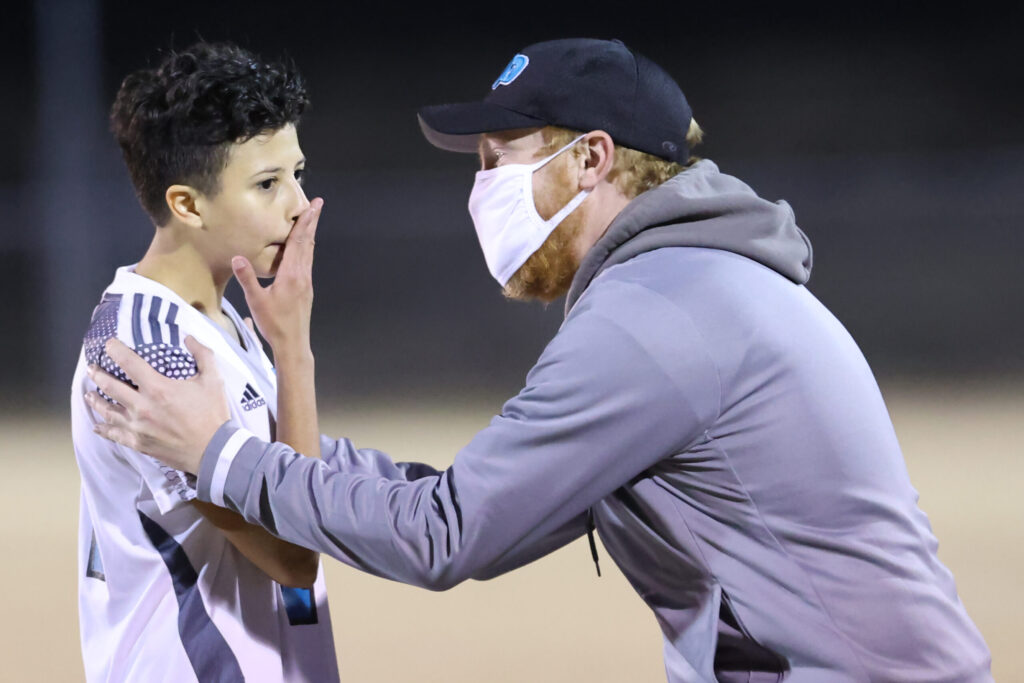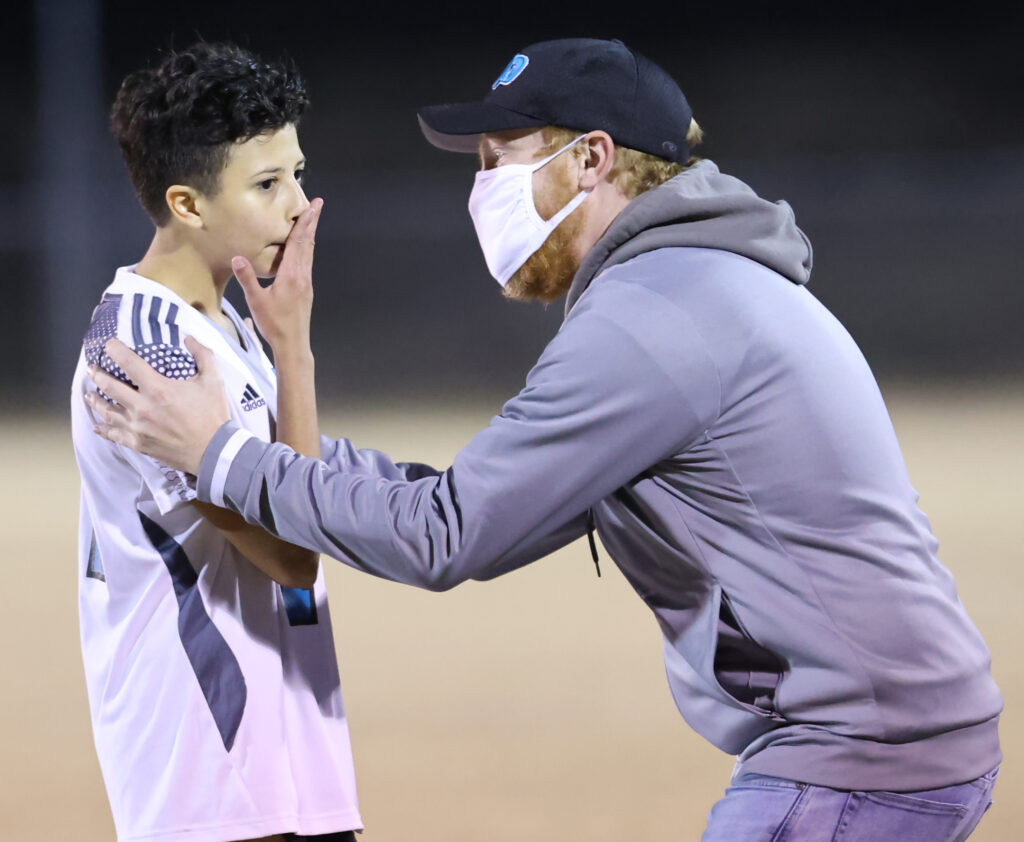High school athletics vs. COVID-19

West Port’s coach Paul Gleason talks with Kamila Morales (11) on the sideline as they play Vanguard during a soccer match at Booster Stadium in Ocala, Fla. on Tuesday, Jan. 12, 2012. Vanguard won the match 1-0. [Bruce Ackerman/Ocala Gazette] 2021.

West Port’s coach Paul Gleason talks with Kamila Morales (11) on the sideline as they play Vanguard during a soccer match at Booster Stadium in Ocala, Fla. on Tuesday, Jan. 12, 2012. Vanguard won the match 1-0. [Bruce Ackerman/Ocala Gazette] 2021.
Coaches in masks directing players. Individual water bottles for every player. Spacing student-athletes on bus rides. Limited capacity crowds. Short benches.
These are just a few ways that the COVID-19 pandemic has altered high school sports in Marion County. It has been a year unlike any other for Marion County athletics.
“It’s not even comparable, literally,” Jody Phillips, the program specialist for Marion County Public Schools, said. “Maybe that’s cliché or something, but it’s not even comparable to anything we’ve had to experience.”
High school football, the most popular high school sport across the southeast, was impacted heavily. Marion County schools played a shortened, seven-game regular season against other local schools. That didn’t stop Dunnellon High School from almost making a run at the state championship.
Schedules across all sports have had to flex this year due to COVID-19 protocols, and it was no different in Marion County. Sudden spikes in cases or other reasons caused cancellations or postponements on short notice. For example, North Marion and Bishop McLaughlin suddenly pulled out of Forest High’s MLK Classic boys basketball tournament.
“Honestly, that’s just a day-to-day thing,” Forest Athletic Director Donald Tucker said. “We don’t really put a lot of emphasis on it as far as trying to find games. If we can find a makeup, we do. If our schedules don’t allow it, we just have to write it off.”
Sometimes, teams don’t just miss one or two games. A two-week quarantine can affect multiple games, which leaves teams scrambling to make up for lost time.
“It makes it tough trying to reschedule. I mean, in a two-week span, you could have as many as six to eight games,” Tucker said. “And trying to make those up later in the season, you know, it can put strains on your team as well. I mean, it could force to have to play three or four nights in a row, depending on what sport it is.”
Schools go to great lengths to play those games. It’s not uncommon to see a team play with few or even no reserves on any given night.
Vanguard’s girls’ basketball team played Forest on Jan. 5 with just five players and one junior varsity player because seven girls were in quarantine. The Knights still emerged victorious with a 53-30 win, but it goes to show what coaches have to deal with this year. Similarly, with nine players in quarantine, Forest’s girls’ soccer team beat The Villages 8-0 on Dec. 17.
“I mean, everyone’s going through something like this. It’s 2020,” Forest girls soccer coach Mike Elliott said after the game. “This is one of those games that we could have canceled it because we lost so many girls, but they wanted to play, and they came out and played well.”
Tucker estimates Forest canceled or postponed 10 to 12 games because of issues at the school, and maybe 20 total this year. Lyle Livengood, the athletic director at West Port, says that he’s seen about 10 postponements or cancellations total.
“If we can play, and it’s safe for us to play, we’re going to try and play,” Livengood said. “We’ve had basketball games where we’ve only had seven players available. But seven kids are, you know, in-shape, teenage athletes, and they certainly can handle playing in a 32-minute game.”
The pandemic has also complicated the financial side of high school athletics. Social distancing on buses may force a school to use an extra bus. Limited capacity at home games —the maximum limit is 40%— has capped the amount of money schools can make at home games.
Though, as Tucker puts it, it’s not all about the money for these schools.
“I always tell people, ‘Man, we’re not in this for the money-making side of it anyway,’” Tucker said. “This is for kids to have a positive experience playing athletics in high school. So, that’s what it boils down to.”
A couple of the issues that high school sports will continue to face throughout the winter are physical contact and playing indoors. Sports like soccer, basketball, cheer and wrestling are either indoor sports or involve plenty of close physical contact, if not both.
The good news is that, according to Phillips, no team has had to enter quarantine twice, and cases aren’t coming from inside the team. Phillips says that they have come from activities away from the team.
“All of it seems to come from the outside in, and that’s how the tracing has come out to this point,” Phillips said.
The ability to have high school sports this year has also been dependent on the student-athletes following guidelines. By all accounts, that part has been successful.
“This is so cliché, but kids are resilient, they just kind of roll with it,” Livengood said. “I would say is that they’re handling it as well as it could be expected or hoped for.”
That resiliency combined with the benefits sports offer students are why the county will continue holding sporting events as safely as possible.
“The most important part is like I said, the kids get an opportunity to do their thing and compete and have some kind of normalcy,” Tucker said. “So, that’s been the biggest positive is that we’re still able to offer these things and give kids a chance to do the things they like to do.”






